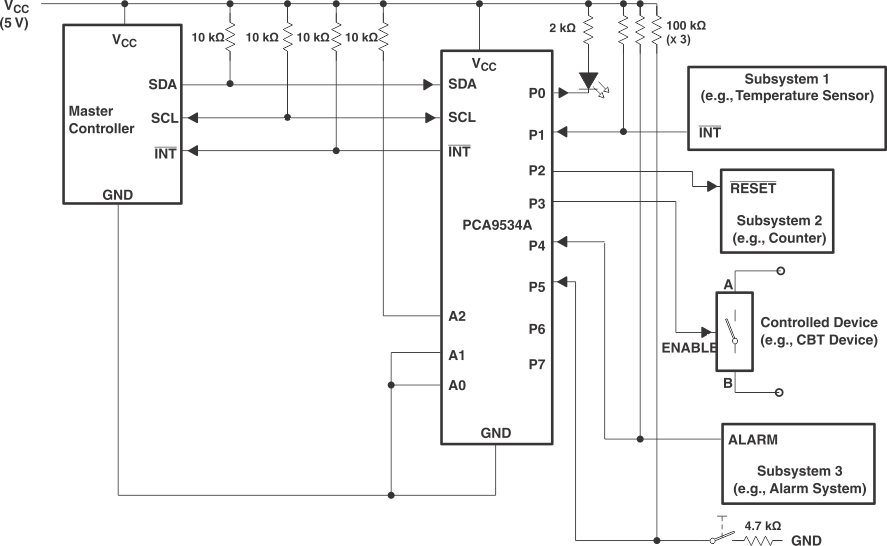SCPS141J September 2006 – March 2021 PCA9534A
PRODUCTION DATA
- 1 Features
- 2 Description
- 3 Revision History
- 4 Description (Continued)
- 5 Device Comparison Table
- 6 Pin Configuration and Functions
- 7 Specifications
- 8 Parameter Measurement Information
- 9 Detailed Description
- 10Application Information Disclaimer
- 11Power Supply Recommendations
- 12Device and Documentation Support
- 13Mechanical, Packaging, and Orderable Information
Package Options
Mechanical Data (Package|Pins)
Thermal pad, mechanical data (Package|Pins)
Orderable Information
10.1.1 Typical Application
Figure 10-1 shows an application in which the PCA9534A can be used.

Device address is configured as 0111100 for this example.
P0, P2, and P3 are configured as outputs.
P1, P4, and P5 are configured as inputs.
P6 and P7 are not used and must be configured as outputs.
Figure 10-1 Typical Application